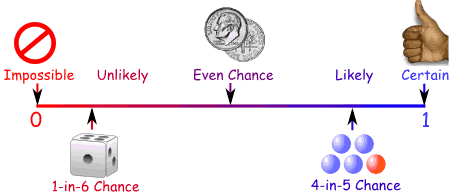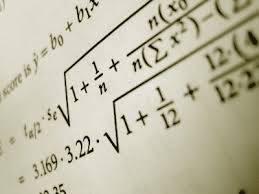Education
Thursday 28 November 2013
Monday 18 November 2013
Wednesday 13 November 2013
SOL IMPORTANT NEWS
Dear student your PCP classes will be held on 15 Nov 2013 instead of 14 Nov 2013 due to change in Moharam holidays.

Saturday 21 September 2013
PROBABILITY
PROBABILITY :- Probability theory like many other branches of mathematics, evolved out of practical consideration. It had its origin in the 16th century when an Italian physician and mathematician Jerome Cardan (1501-1576) wrote the first book on the subject "Book on Games of Chance" (Biber de Ludo Aleae). It was published in 1663 after his death.
In 1654, a gambler Chevalier de Metre approached the well known French Philosopher and Mathematician Blaise Pascal (1623-1665) for certain dice problem. Pascal became interested in these problems and discussed with famous French Mathematician Pierre de Fermat (1601-1665). Both pascal and Fermat solved the problem independently. Besides, pascal and Fermat, outstanding contributions to probability theory were also made by Christian Huygenes (1629-1665), a Dutchman, J. Bernoulli (1654-1705). De Moivre (1667-1754), a Frenchman Pierre Laplace (1749-1827), the Russian P.L Chebyshev (1821-1897), A. A Markov (1856-1922) and A. N Kolmogorove (1903-1987). Kolmogorove is credited with the axiomatic theory of probability. His book 'Foundations of probability' published in 1933, introduces probability as a set function and is considered a classic...




STATISTICS
STATISTICS :- 'Statistics' is derived from the Latin word 'status' which means a political state. This suggests that statistics is as old as human civilisation. In the year 3050 B.C., perhaps the first census was held in Egypt. In India also, about 2000 year ago, we had an efficient system of collecting administrative statistics, particularly, during the regime of Chandra Gupta Maurya (324-300 B.C.). The system of collecting data related to births and deaths is mentioned in Kautilya's Artishastra(around 300 B.C.) A detailed account of administrative surveys conducted during Akbar's regime is given in Ain-I-Akbari written by Abul Fazl.
Captain john Graunt of London (1620-1674) is known as father of vital statistics due to his studies on statistics of births and deaths. Jacob Bernoulli (1654-1705) stated the Law of Large number in his book "Ars Conjectandi', published in 1713.
The theoretical development of statistics came during the mid seventeenth century and continued after that with the introduction of theory of games and chance (i.e., probability). Francis Galton (1822-1921), an Englishman, pioneered the use of statistical methods, in the field of Biometry. Karl Pearson (1857-1936) contributed a lot to the development of statistical laboratory in England (1911). Sir Ronald A. Fisher (1890-1962), known as the Father of modern statistics, applied it to various diversified fields such as Genetics, Biometry, Education, Agriculture, etc....



LINEAR INEQUALITIES
LINEAR INEQUALITIES :
1. Two real number or two algebraic expression related by the symbols greater then and less then form an inequality.
2. Equal number may be added to (or subtracted from )both side of an inequality.
3. Both side of an inequality can be multiplied (or divided) by the same positive number, But when both side are multiplied (or divided) by a negative number, then the inequality is reversed.
4. The value of x, which make an inequality a true statement, are called solutions of the inequality.
5. To represent x less then a (or x greatdr then a) on a number line, put a circle on the number a and dark line to the left (or right) of the number a.
6. To represent a number line, put a dark circle on the number a and dark the line to the left (or right) of the number x.
7. If an inequality is having symbol, then the point on the line are also included in the solutions of the inequality and the graph of the inequality lies left (below) or right (above) of the graph of the equality represented by dark line that satisfies and arbitrary point in the part.
8. If an inequality is having greater then or less then symbole. Then the point on the line are not included in the solutions of the inequality and the graph of the inequality lies to the left (below) or right (above) of the graph of the corresponding equality represented by dotted line that satisfies an arbitrary point in that part.
9. The solution region of a system of inequalities is the region which satisfies all the given inequalities in the system simultaneously.

MATHEMATICAL REASONING
MATHEMATICAL REASONING :-
The first treatise on logic was written by Aristotle (384 B.C.-322 B.C.). It was a collection of rules for deductive reasoning which would serve as a basis for the study of every branch of knowledge. Later, in the seventeenth century, German mathematician G. W. Leibnitz (1646-1716) conceived the idea of using symbols in logic to mechanise the process of deductive reasoning. His idea was realised in the nineteenth century by the English mathematician George boole (1815-1864) and Augustus De Morgan (1806-1871), who founded the modern subject of symbolic logic....




Subscribe to:
Posts (Atom)
